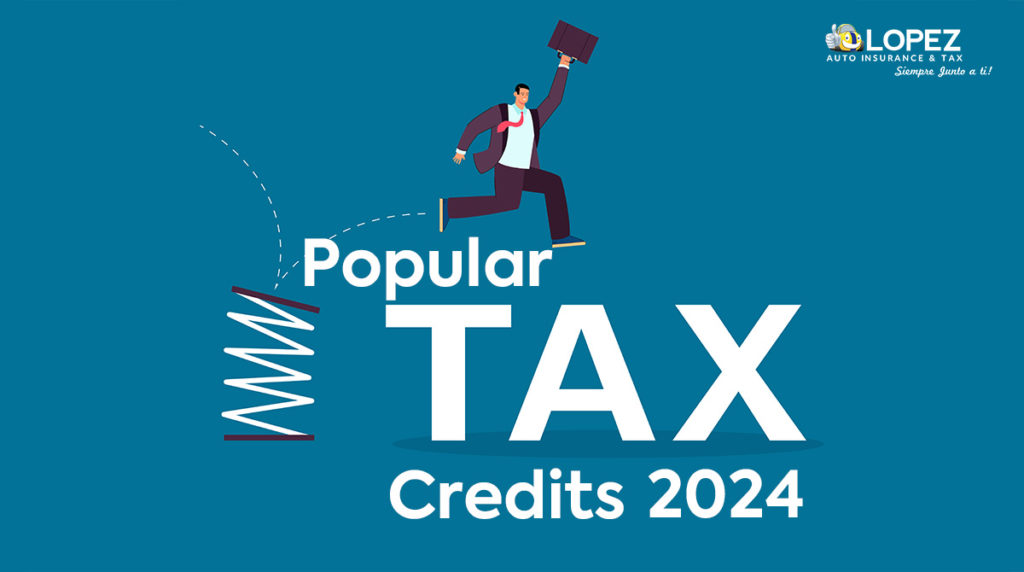Tax credits might be useful during tax filing season. Here are some popular ones for those raising children, investing for retirement, or paying for education.
Tax credits are the tax world’s equivalent of gold. Qualifying for one feels better than discovering $100 in your jeans pocket. Here’s a quick outline of how they function and which ones you might qualify for.
Table of Contents
What is a tax credit?
A tax credit provides taxpayers with a dollar-for-dollar decrease in their tax payments. This is different from a tax deduction, which is a monetary amount that the IRS permits taxpayers to deduct from their adjusted gross income (AGI) to reduce their taxable income.
Tax credits are available at both the federal and state levels to encourage particular behaviors, such as purchasing an electric vehicle, or to offset the cost of certain expenses. To qualify for a tax credit, taxpayers must typically complete a stringent set of eligibility requirements.
How do tax credits work?
Tax credits are divided into three categories: nonrefundable, refundable, and partially refundable. These classifications explain how the credit will be applied to the taxes you owe. The bulk of tax credits are non-refundable. Good tax software should be able to guide you through whatever credits you may be eligible for and how to claim them.
Here’s the breakdown of each type:
Nonrefundable tax credit
Nonrefundable tax credits reduce your tax burden by the specified credit amount. In other words, if you qualify for a $500 nonrefundable credit, your taxes will be lowered by $500. However, if you have zeroed out your tax burden, you will not receive a refund for any unused tax credit.
Refundable tax credit
Refundable tax credits are a popular tax advantage. That’s because claiming one can result in both a reduction in your taxes owing and a refund. If you owe less in taxes than the credit amount, the difference will be refunded to you once you file your tax return. For example, if you owe $500 and qualify for a $700 refundable credit, the IRS will return you the extra $200.
Partially refundable tax credit
The final sort of credit falls somewhere between the two previously stated. Partially refundable credits can reduce your tax liability by the credit amount, and if your tax bill is less than the credit amount, you may be eligible for a partial refund of any leftover overage – but only up to a specified amount. For example, if the credit is worth $1,000 but only $500 of it is refundable, you may be able to reduce your tax burden by $1,000 or receive up to $500 as a refund if the taxes payable are less than the credit.
Popular and new tax credits for 2024

Some of the most popular tax credits are divided into five categories. These tax credits apply to tax returns due on April 15, 2024, or on October 15, 2024, with an extension.
Keep in mind that the sections below are only summaries. Tax credits have various requirements, so it’s best to consult a tax specialist if you’re not sure if you’re entitled.
Tax credits for people with kids

Child Tax Credit
For the 2023 tax year (taxes due in 2024), the child tax credit could be worth up to $2,000 per child, with $1,600 potentially recoverable through the additional child tax credit. You may qualify for the entire credit if your modified adjusted gross income is less than:
- $400,000 for married couples filing jointly; $200,000 for all other filers.
- The higher your salary, the less you can qualify for.
Child and Dependent Care Credit
In general, the child and dependent care credit covers up to 35% of up to $3,000 in child care and related expenditures for a kid under 13, a spouse or parent who is unable to care for themselves, or another dependant so you may work—and up to $6,000 in expenses for two or more dependents.
- Higher-income earners have a lower percentage of permissible expenses, which reduces the credit’s worth.
- Payments made through a dependent-care flexible spending account or another tax-advantaged program at work may lower your credit score.
Adoption Credit
For the fiscal year 2023, this pays up to $15,950 in adoption costs per child.
- The credit begins to phase out at $239,230 in modified adjusted gross income, and those with AGIs higher than $279,230 are not eligible.
- You cannot take credit for adopting your spouse’s child.
- People who adopt children with functional needs can receive up to the full credit, even if their real expenses are lower.
Tax credits for low-to-middle-income households

Earned Income Credit
This earned income tax credit will pay you between $600 and $7,430 in tax year 2023, depending on your filing status and income. You do not need to have children to qualify; but, the more children you have, the bigger your potential credit amount.
- If your AGI was around $63,000 in 2023, it’s something to consider. However, if you received more than $11,000 in investment income, dividends, capital gains, and a few other items in 2023, you will not be eligible.
Premium tax credit
The premium tax credit is a refundable benefit for low- to middle-income taxpayers that can help them pay for health insurance premiums through eligible health insurance marketplace plans. The credit is also unique in that taxpayers have the option of claiming it in advance to help manage premium payments throughout the year, or waiting until they file their tax returns.
Tax credits for investing in retirement

Saver’s Credit
The saver’s credit ranges from 10% to 50% of up to $2,000 in contributions to an IRA, 401(k), 403(b), or other qualified retirement plans ($4,000 if filing jointly). The percentage varies according on your filing status and income, but it’s worth considering if your AGI in 2023 was $73,000 or less if married filing jointly, $54,750 if head of household, or $36,500 if single.
Tax credits for education
American Opportunity Credit
The American Opportunity Tax Credit is worth up to $2,500 per student for tuition, activity fees, books, supplies, and equipment throughout the first four years of college. It is partially refundable, which means that if the credit reduces your tax payment to zero, you can get up to 40% (up to $1,000) as a refund.
- The student must be enrolled at least half-time and have no felony drug convictions.
- If parents or competent caretakers qualify, they can accept the credit and claim the student as a dependent when they return.
Lifetime Learning Credit
The lifelong learning credit can cover up to $2,000 in tuition, activity fees, books, supplies, and equipment for undergraduate, graduate, or non-degree courses at authorized institutions.
- Unlike the American Opportunity Credit, there is no employment requirement.
- The $2,000 limit applies per return, not per student, so the maximum you can receive is $2,000 regardless of how many students you pay expenses for.
- You can claim both the American Opportunity Credit and the Lifetime Learning Credit on the same tax return, but not for the same student.
Tax credits for green purchases.

Residential Energy Tax Credits
The purchase of energy-efficient house renovations, including as windows, doors, and heat pumps, might be worth up to $3,200 under the energy-efficient home improvement tax credit.
On the other hand, the domestic clean energy tax credit (also known as the solar tax credit) can help you save up to 30% on solar energy equipment such as solar water heaters, solar panels, battery storage technologies, and other home enhancements.
Electric vehicle tax credit
For the 2023 tax year, the electric vehicle tax credit, also known as the clean vehicle credit, could get you up to $7,500 for buying a new electric vehicle and up to $4,000 for the purchase of a used one.
Conclusion
Navigating tax credits can be like uncovering buried treasure, but armed with knowledge, you can harness their power to boost your financial well-being. Whether you’re a parent, a student, a retiree, or a green enthusiast, there’s likely a credit out there waiting to lighten your tax load. Remember, understanding your eligibility and claiming the credits you deserve can make a significant difference come tax time. So, seize the opportunity and explore the potential savings waiting for you!
FAQs
How do I know if I qualify for tax credits?
Eligibility criteria vary depending on the specific credit. Generally, factors such as income level, filing status, and qualifying expenses determine eligibility. Consult a tax professional or utilize reliable tax software to determine your eligibility for various credits.
Can I claim multiple tax credits on my tax return?
Yes, you can claim multiple tax credits on your tax return as long as you meet the eligibility requirements for each credit. However, some credits may have overlapping eligibility criteria, so it’s essential to review each credit carefully to avoid double-dipping.
When should I claim tax credits?
Tax credits can typically be claimed when you file your annual tax return. However, some credits, like the premium tax credit, can be claimed in advance to help offset the cost of health insurance premiums throughout the year. Be sure to review the specific guidelines for each credit.
Do tax credits expire?
Tax credits may have expiration dates or sunset provisions, meaning they are available for a limited time. Additionally, changes in tax laws and regulations can impact the availability and value of certain credits. Stay informed about legislative updates and consult tax professionals for the most current information.
What documentation do I need to claim tax credits?
Documentation requirements vary depending on the credit. Generally, you’ll need to provide evidence of qualifying expenses, such as receipts, invoices, or statements. Keep detailed records of your expenses and consult IRS guidelines to ensure compliance with documentation requirements for each credit.





